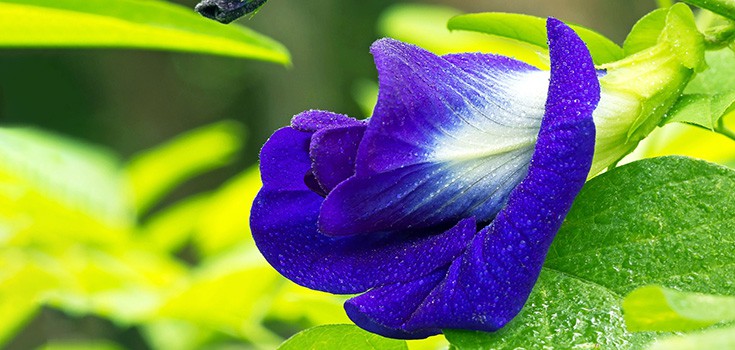Shankhpushpi – Ayurvedic Healing Herb for more than a Dozen Ailments

An herb widely used in Ayurvedic medicine as a brain tonic and memory enhancer, shankhpushpi has been used for centuries as a means to promote higher intelligence and a more expanded world view.
In a more physical sense, the herb can help to eliminate hypertension, anxiety, asthma, stress-related disorders, epilepsy, insomnia, urinary disorders, hyperthyroid disease, constipation, and numerous neurodegenerative diseases including dementia and Alzheimer’s disease. The herb works primarily by supporting the central nervous system.
Shankhpushpi – Supporting the Central Nervous System
Shankhpushpi grows on rocky and sandy surfaces particularly in North India and belongs to the Convolvulaceae family. Its flowers range in color from a perfect white to blush pink color.
The active ingredients of this herb include:
- Glycosides and Flavonoids – Flavonoid glycosides occur naturally in fruits and vegetables. There are more than 4,000 different flavonoids, with all of them having beneficial effects on the human body. They can strengthen the immune system, protect us from cancer, and reduce the fragility of capillaries. Essentially, flavonoids act like antioxidants.
- Coumarins – These natural chemical compounds help to thin the blood, and have anti-fungal and anti-tumor activities.
- Alkaloids – Alkaloids can be poison, but they are also very powerful in the right form. Alkaloids in many herbs, including Shankhpushpi, have very useful physiological effects, akin to morphine and codeine (but without the pharmacological addiction). They are muscle relaxants, pain reducing, and seratonin-boosting.
“Shankhpushpi is an Ayurvedic drug used for its action on the central nervous system, especially for boosting memory and improving intellect. Quantum of information gained from Ayurvedic and other Sanskrit literature revealed the existence of four different plant species under the name of Shankhpushpi, which is used in various Ayurvedic prescriptions described in ancient texts, singly or in combination with other herbs.” – PubMed
This herb is also a laxative, increases sperm count, and is even considered an aphrodisiac. Perhaps most importantly, the herb prevents neurotoxicity and reduces stress.
Additional Sources:
Sankhapuspi, The Ayurvedic Pharmacopeia of India, Part 1, Vol 2, pp 155.

nice info BUT you owe it to all people whom may be searching to give the latin name so that individuals can be sure to find the right plant!! no herb or plant should written on benefits without such info. HUGE mistakes are often made without it.
See the two links given at the end of this article for the Latin species names.
Interesting article, here in Thai People use it in flavoring the Rice, do you have any other suggestions as to how to obtain maximum benefits, applications, dosage etc?
I am really disappointed to read this page on which you are talking about an important Ayurvedic drug but mixing up two plants simply because they have same common name Shankhpushpi. The plant of which you have shown the photograph is Clitoria ternatea a member of pea family (Fabaceae), the generic names explains its shape, it is a herb with trifoliate leaves found climbing over walls and with pea like pods, often grown as ornamental.
The Shankhpushpi the famous Ayurvedic plant is Convolvulus prostratus (syn: Convolvulus pluricaulis, C. micrphyllus; and not Convolvulus arvensis as sometimes reported, which has large hastate leaves and larger flowers), it is a prostrate herb from family Convolvulaceae with small simple linear leaves and white or pale pink funnel-shaped flowers. I am uploading the same so that you can correct your information.
Ayurvedic doctors themselves disagree which plant is the traditional medicine. The researchers of “Comparative pharmacognostical investigation on four ethanobotanicals traditionally used as Shankhpushpi in India” by Sethiya NK1, Trivedi A, Patel MB, Mishra SHas J Adv Pharm Technol Res. 2010 Oct;1(4):388-95, like the prior 1988 Study by Gian Singh Aulakh, Sharada Narayanan, and Geeta Mahadevan, as the titles indicates, had to test four different plants. This is not a shortcoming of Naturalsociety or the author, but of the Ayurvedic medical field itself.